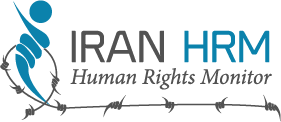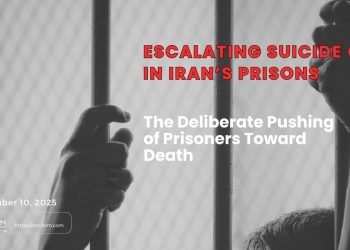On the occasion of September 8, International Literacy Day
Introduction
September 8, International Literacy Day, highlights education as a fundamental right and a cornerstone of sustainable development. While this year’s global theme emphasizes promoting literacy in the digital age, Iran continues to face a deep structural failure. Official statistics and admissions reveal that millions of Iranians remain deprived of their most basic right: education. This is not a temporary challenge but a systematic violation of the right to education in Iran by the ruling regime.
Background and Statistics: At Least 20 Million Illiterate and Semi-literate
Despite repeated claims by the ruling regime about rising literacy rates, their own official statistics reveal a different reality:
– Ali Bagherzadeh, then-head of the Literacy Movement Organization – October 6, 2018 (14 Mehr 1397): “According to literacy indicators for the age group six and above, the total number of absolute illiterates is 8.8 million… The number of semi-literates is also 10 million.”
– Seyed Mohammad Javad Abtahi, member of the Parliament’s Education Committee – September 25, 2018 (3 Mehr 1397): “There are about 11 million illiterates in Iran, accounting for 13 percent of the country’s population.”
– Statistical Center of Iran – 2011 (1390): The number of illiterates was 9.48 million, of which 6.25 million were women—two-thirds of the country’s illiterate population.
These figures show that even based on official admissions, Iran faces at least 20 million illiterate and low-literate people—a structural educational deprivation perpetuated by the regime’s discriminatory and ineffective policies.
 Out-of-School Children
Out-of-School Children
Official admissions indicate that the number of out-of-school children in Iran has steadily increased:
– Parliamentary report – 2016 (1395): 778,000 out-of-school children were reported.
– Official statistics – 2021 (1400): This figure rose to over 911,000.
– Education Ministry officials – latest figures: At the elementary level alone, 76,175 students were deprived of schooling, and less than one-third (24,849) were reintegrated.
– A senior secondary education official: “Dropout rates among girls in many regions are significantly higher than among boys.”
These data confirm that the crisis of school exclusion, especially among girls, has become one of the most serious violations of the right to education in Iran.
Regime’s Narrative and Response
Contradictory official statistics reveal a lack of transparency and disregard for planning:
– Ali Bagherzadeh – April 25, 2018 (5 Ordibehesht 1397): Announced that the number of illiterates aged 10 to 49 was 2.3 million.
– Ali Bagherzadeh – March 31, 2018 (11 Farvardin 1397): Just weeks earlier, he had put the same figure at 2.7 million.
Faced with the growing exclusion of children from education, officials also attempted to shift responsibility:
– Minister of Education – 2022 (1401): Claimed that part of the hundreds of thousands of out-of-school children “are unrelated to the ministry” and blamed family economic problems.
These statements contradict the Constitution, which obliges the state to provide free and compulsory education up to the end of secondary school. Such contradictions and denials demonstrate the regime’s structural neglect of the right to education.
The Return of Illiteracy: A Silent Crisis
While many countries have eradicated illiteracy, Iran is witnessing its resurgence:
– State-run Tabnak website – October 6, 2018 (14 Mehr 1397): Reported that Uzbekistan, Tajikistan, Turkmenistan, Kazakhstan, and Kyrgyzstan had all reached 100 percent literacy
– Mohammad Reza Mahboubfar, sociologist – State-run Farhang Sadid website, December 30, 2019 (9 Dey 1398): “The return of a 47 percent illiteracy rate to the country is a kind of silent crisis in Iran. There is a significant correlation between illiteracy and social harms in Iranian society. With the unprecedented rise of illiteracy and semi-literacy in our country, poverty and unemployment have increased.”
These admissions reveal that the lack of literacy in Iran is not just an educational issue but a major social threat directly tied to poverty, unemployment, and structural inequality.
 International Organizations’ Position
International Organizations’ Position
International bodies have repeatedly warned about the educational crisis in Iran:
– UNESCO – 2015 report: “At least 9 million people over the age of 10 in Iran lack sufficient literacy.” UNESCO highlighted challenges such as “geographic disparities, low quality of programs, and high dropout rates.” It also stressed that education must be a “universal and lifelong right,” while in Iran it is restricted to ages 6 to 49.
– World Bank – official estimate: Put the number of absolute illiterates in Iran at 11.6 million, higher than official domestic figures.
– United Nations – Sustainable Development Goals (SDG4): Iran committed to ensuring inclusive, equitable, and quality education for all children. Yet UN reports confirm that these commitments have not been implemented. Iran’s education system ranks 103rd globally.
These figures confirm that the international community also recognizes illiteracy in Iran as a chronic violation of the right to education and evidence of the regime’s failure to fulfill its international human rights obligations.
Social and Human Rights Consequences
The crisis of low literacy has profound impacts on human dignity and social development:
– Statistical Center of Iran – 2011 (1390): About 60 percent of illiterates are women. Lack of schools in deprived regions and early marriages exclude large numbers of girls from education.
– Agriculture officials – official data: “About 70 percent of Iranian farmers are illiterate.” This perpetuates poverty and blocks modernization of a vital sector.
– PIRLS 2021 international assessment: Iran scored only 413 in reading literacy, ranking near the bottom among 57 countries.
These facts demonstrate that illiteracy in Iran is not merely an educational problem but a clear systematic violation of the right to free and compulsory education, recognized in Iran’s Constitution and in international human rights treaties.
Conclusion and Call to Action
On International Literacy Day 2025, Iran faces one of the most severe educational crises in the region: millions of illiterate and semi-literate adults, nearly one million out-of-school children, systemic gender discrimination, and alarmingly low educational quality. The regime’s refusal to implement UNESCO’s 2030 Education Agenda and its contradictory statistics prove its structural disregard for its international human rights obligations.
This situation constitutes a systematic violation of the right to education in Iran. Without urgent action, the cycle of poverty and inequality will deepen, undermining the future of generations to come.
We call on the UN Human Rights Council, UNESCO, and the World Bank to:
– Conduct independent investigations into the state of education in Iran,
– Hold the ruling regime accountable for its international obligations,
– And support Iranian civil society in achieving free, equal, and quality education for all.







